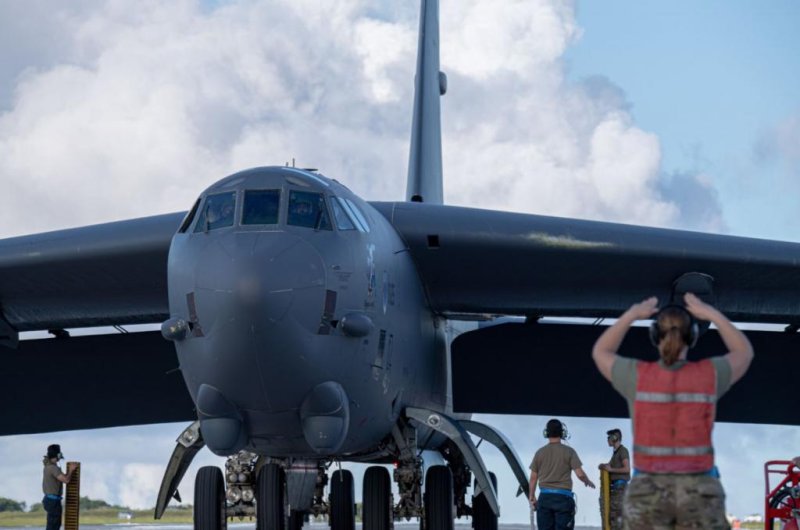B-52H bombers of the U.S. Air Force left Barksdale Air Force Base, La., for deployment to Andersen Air Force Base, Guam, last week. Photo by Senior Airman Jovante Johnson/U.S. Air Force
April 19 (UPI) -- Four B-52H Stratofortress bombers were deployed to Andersen Air Force Base, Guam, for bomber task missions, the Air Force announced.
The planes of the 2nd Bomb Wing left Barksdale Air Force Base, La., for operations in the Indo-Pacific region to "demonstrate the strategic credibility and tactical flexibility of U.S. forces in today's security environment across the globe," an Air Force statement on Saturday said.
Rapid deployment of bomber task forces replaced a 15-year continuous presence of bombers at Guam to align with the concept of strategic unpredictability, an element of the 2018 National Defense Strategy.
Bomber missions involving B-52 and B-1 Lancers have been increasingly common since 2014, as the Air Force seeks to show tactical flexibility and evaluates the readiness of its presence around the world.
A task force of four B-52s arrived in Guam from Louisiana in February 2021 for "strategic deterrence missions."
In December 2020, two B-52s arrived at an unidentified location in the Middle East, the third such deployment in 45 days, for what U.S. Central Command called a "deliberate appearance" meant to "underscore the U.S. military's commitment to regional security and demonstrate a unique ability to rapidly deploy overwhelming combat power on short notice."
Before that, an August 2020 mission of six B-52s from Minot Air Force Base, N.D., deployed to Britain for NATO flight training exercises.
The arrival of B-52s in Guam is meant to project U.S. airpower in the Indo-Pacific region, where China is demonstrating its own power through territorial claims in the South China Sea.















